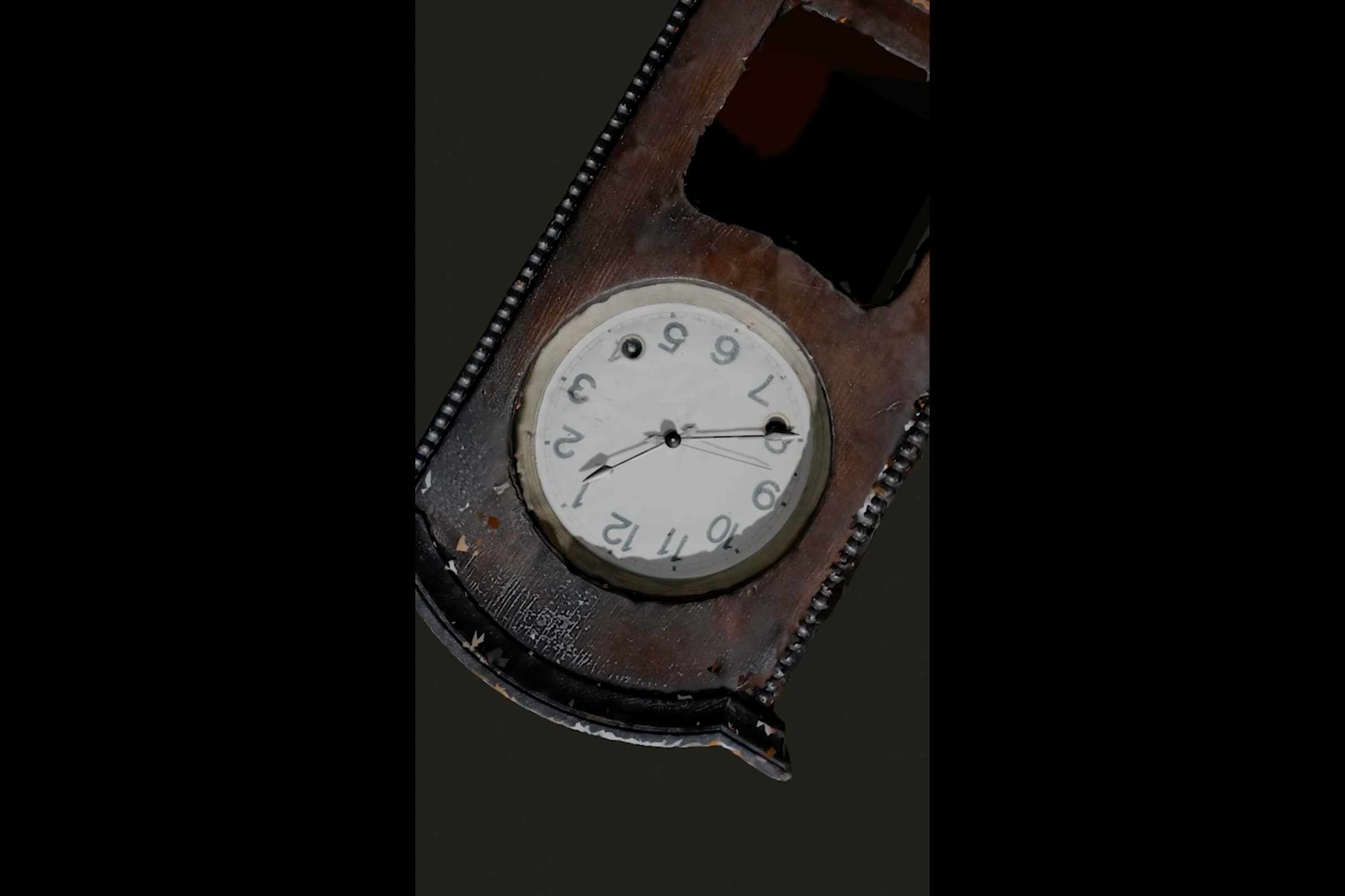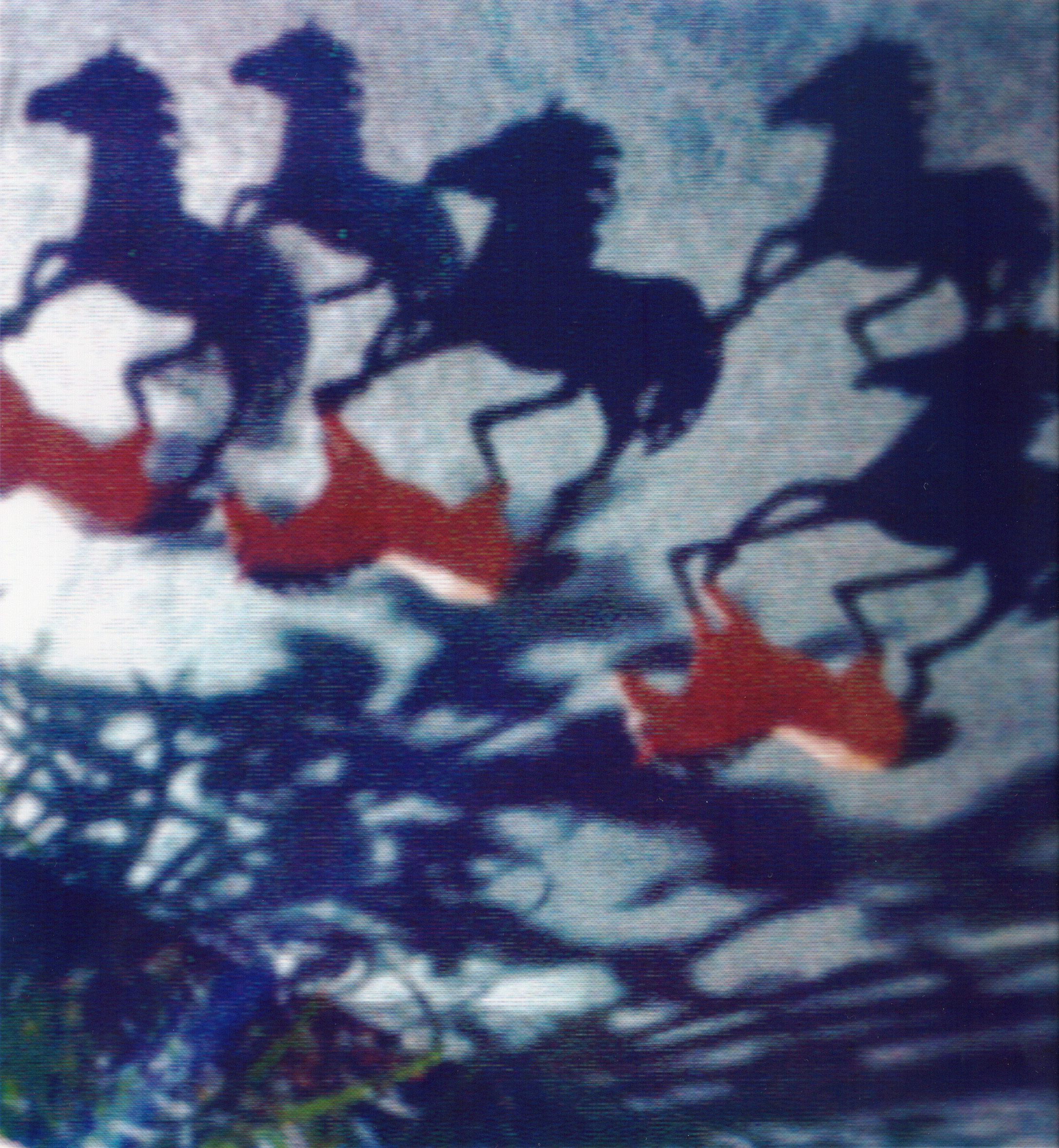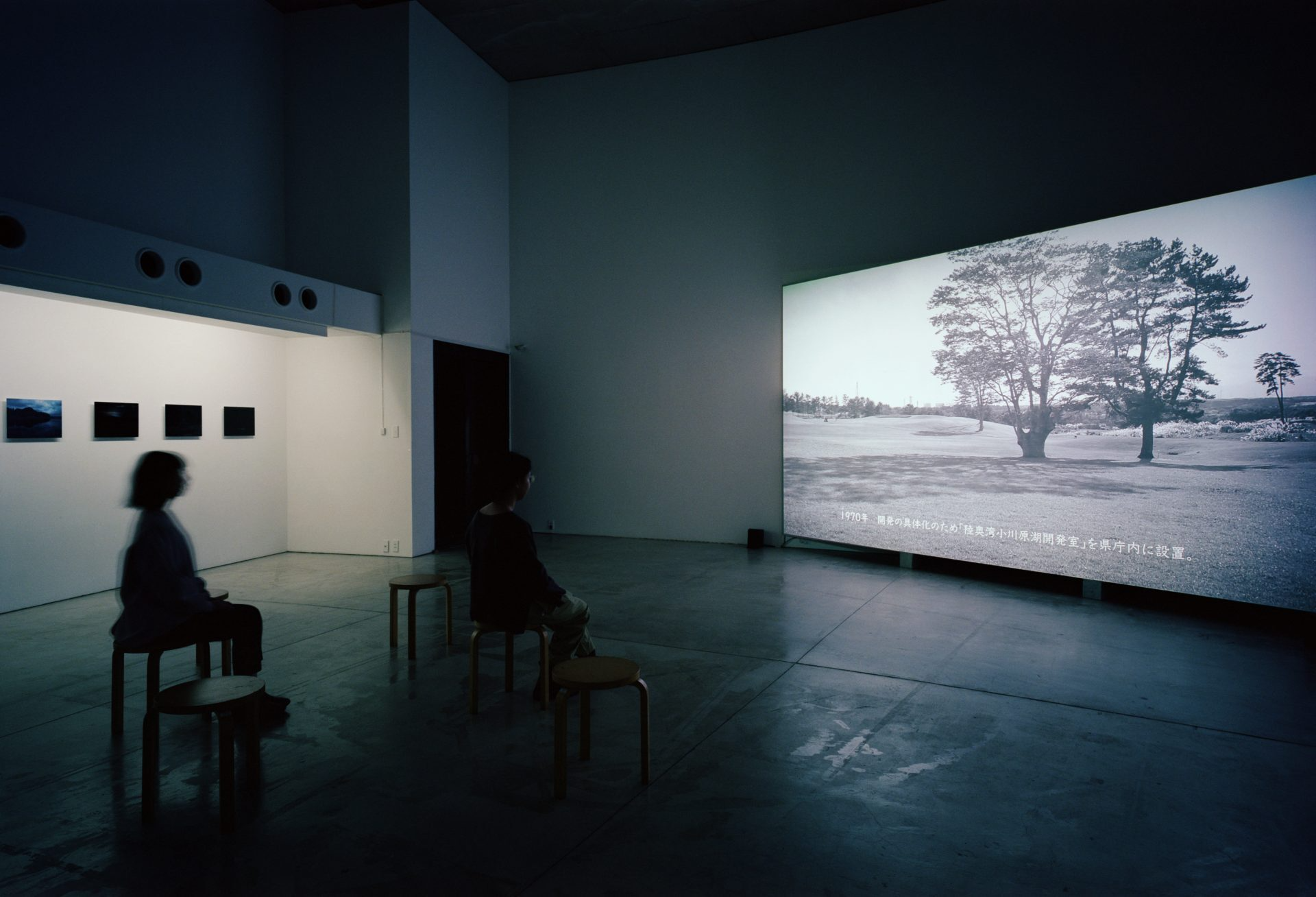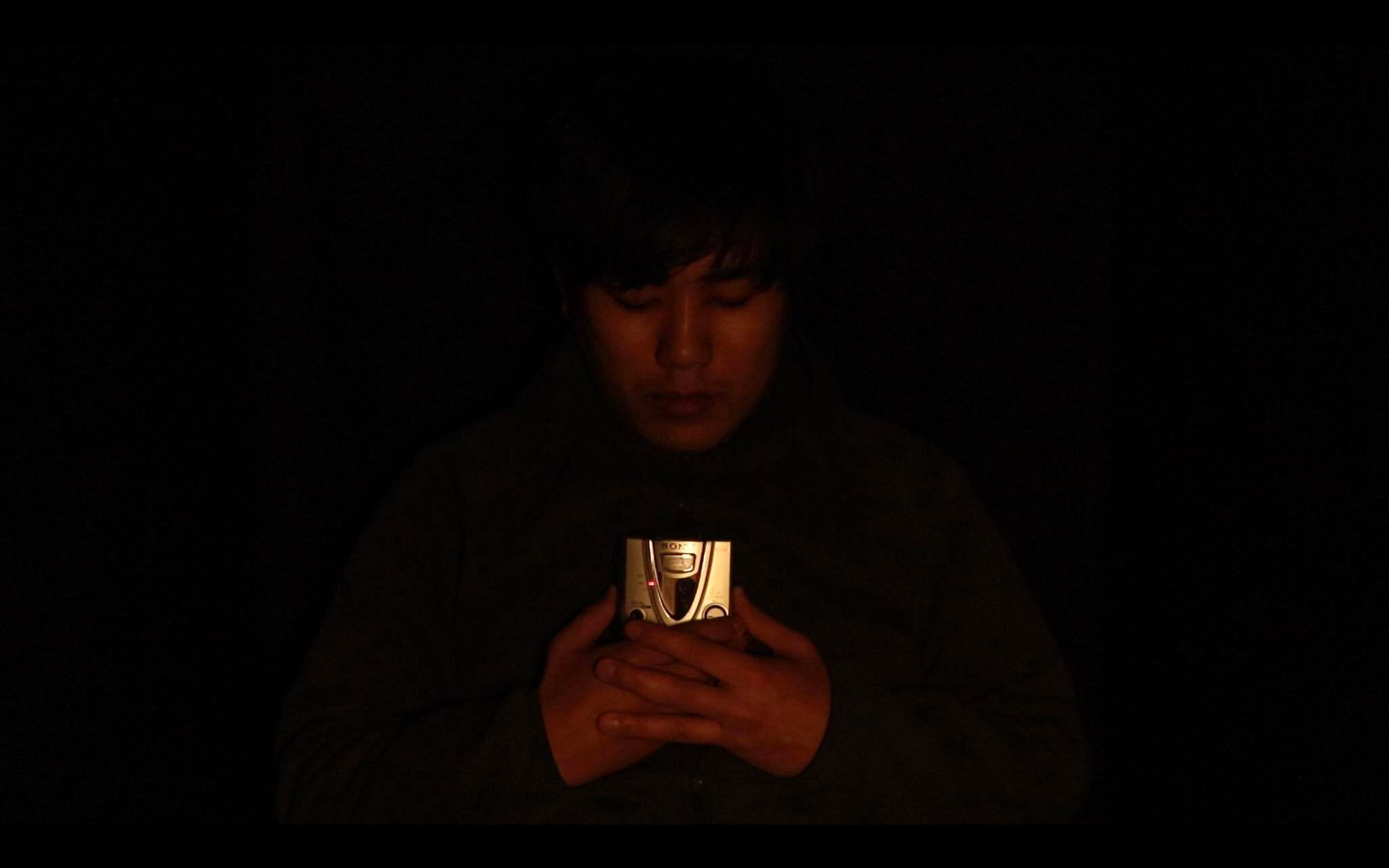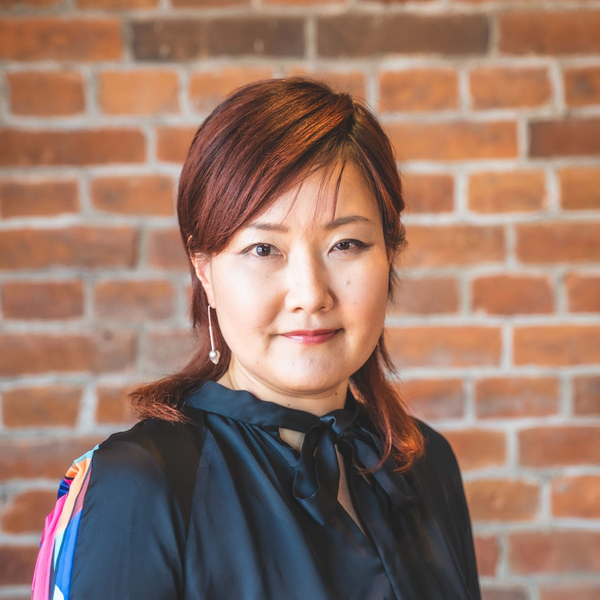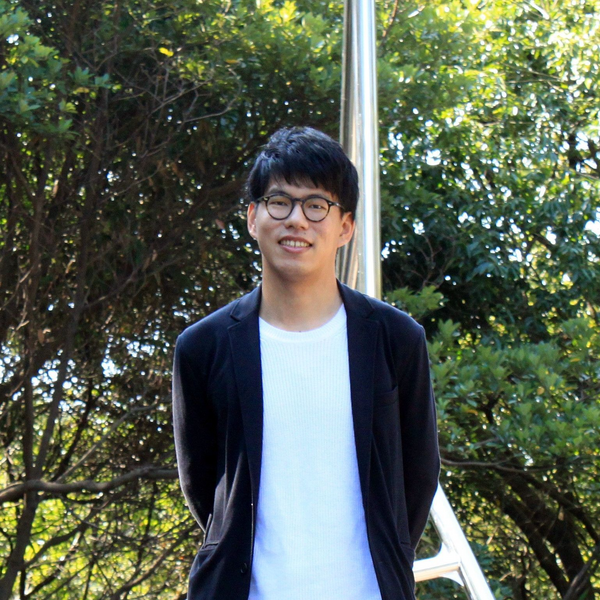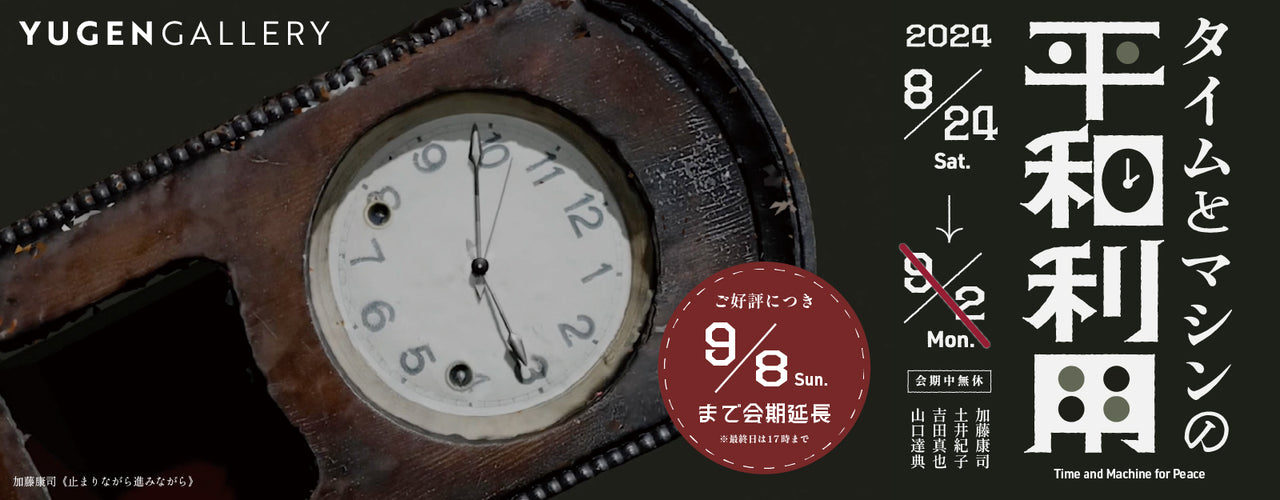
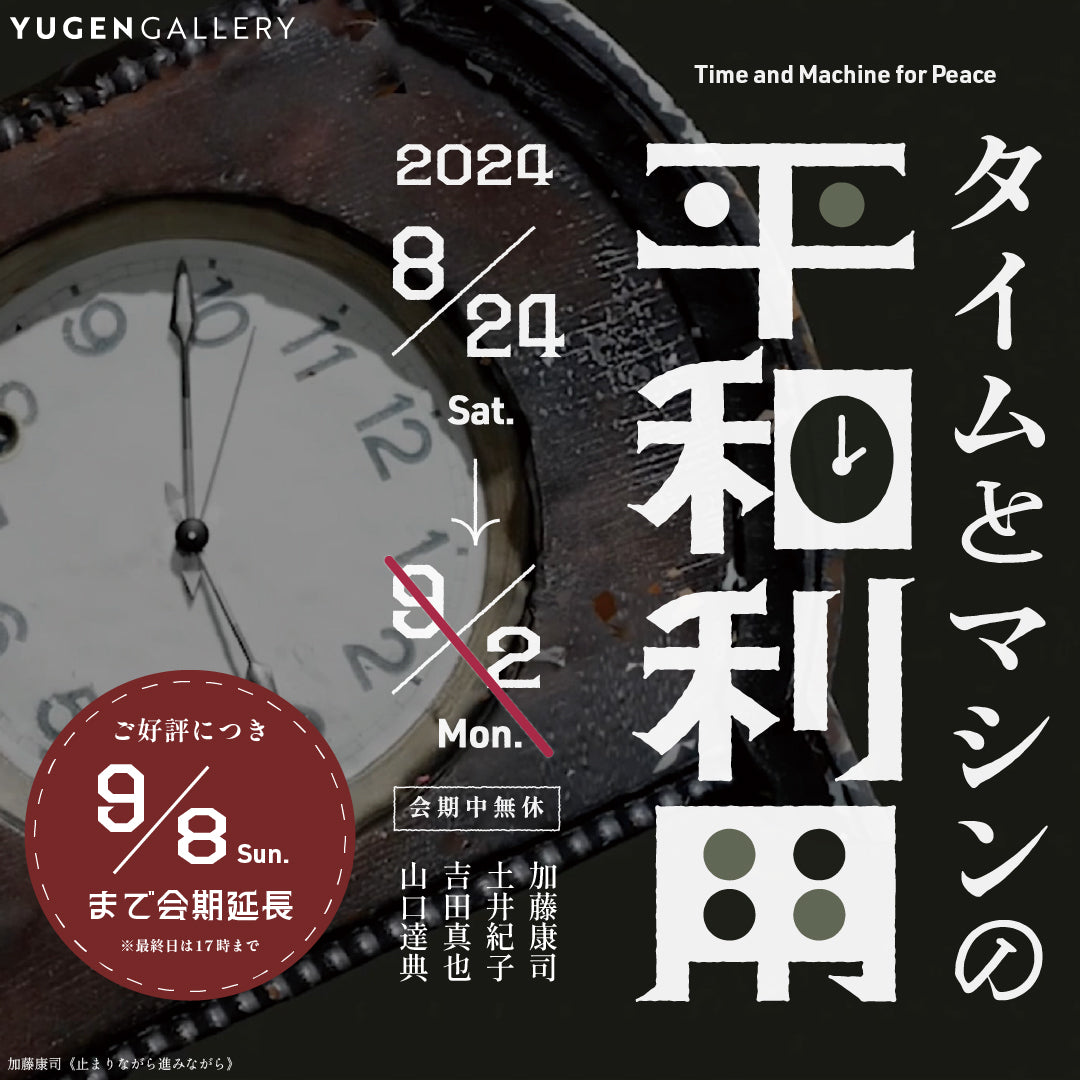
Group Exhibition "Peaceful Use of Time and Machines"
Exhibition Information
Venue
YUGEN Gallery
KD Minami Aoyama Building 4F, 3-1-31 Minamiaoyama, Minato-ku, Tokyo
Dates
Opening Hours
Weekdays: 13:00-19:00
Weekends and holidays: 13:00-20:00
*Ends at 17:00 on the final day only
Closed Days
None
Date of presence
Admission Fee
free
Notes
others
Exhibited works images
Talk event "The Past, Present and Here of Other Places -- Hiroshima, Aomori and Tokyo"
Statement
About sales of artworks
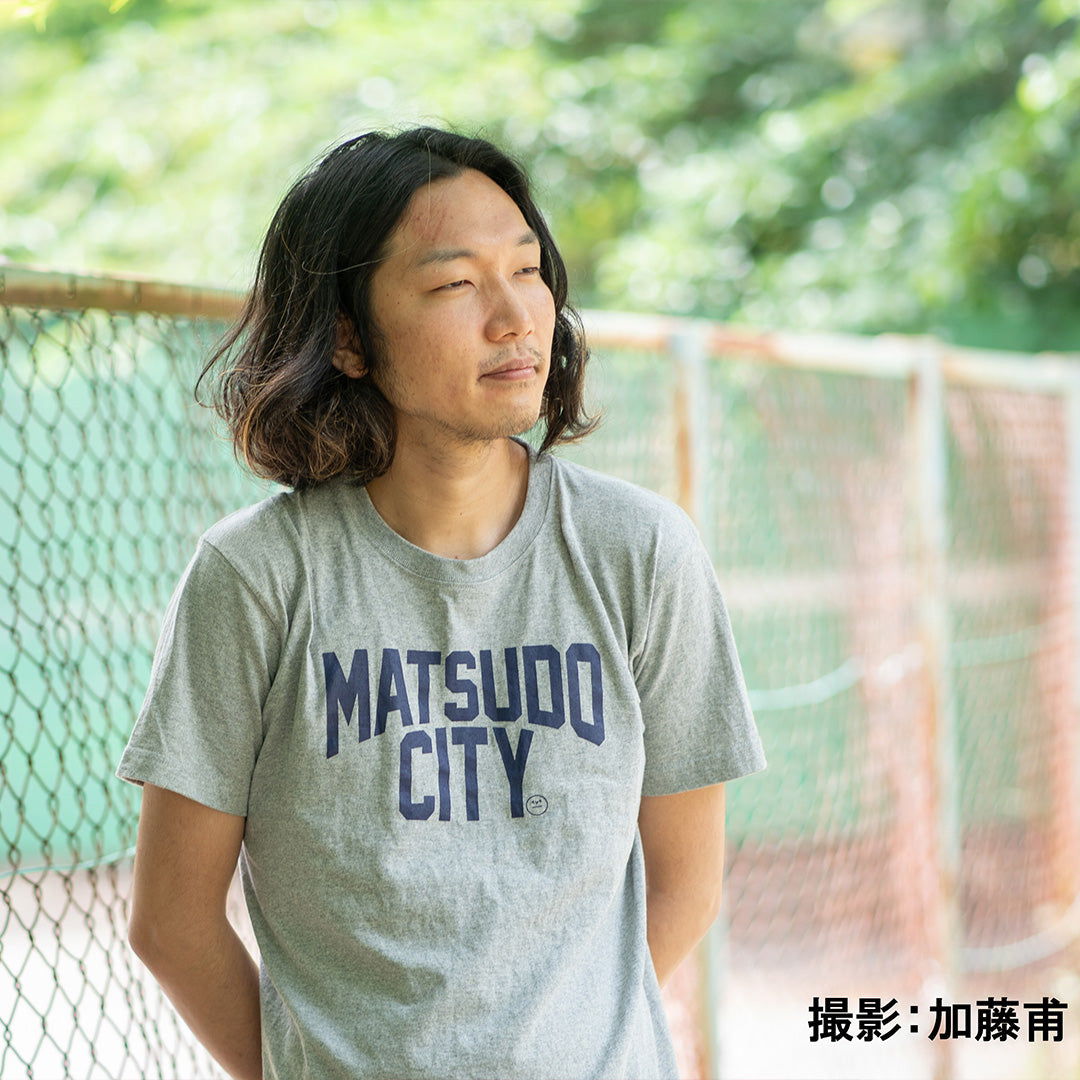
Koji Kato
Koji Kato
Koji Kato / Born in Hyogo Prefecture in 1994. Exchange student at Hongik University (Korea) in 2016. Graduated from the Tokyo University of the Arts Graduate School of Global Art Practice (GAP) in 2021. Awards include the Kimura Eriko Award, a judge at the Art Award Tokyo Marunouchi 2021. He is currently the director of Dead End Studio (Chiba) and co-director of PARADISE AIR (Chiba).
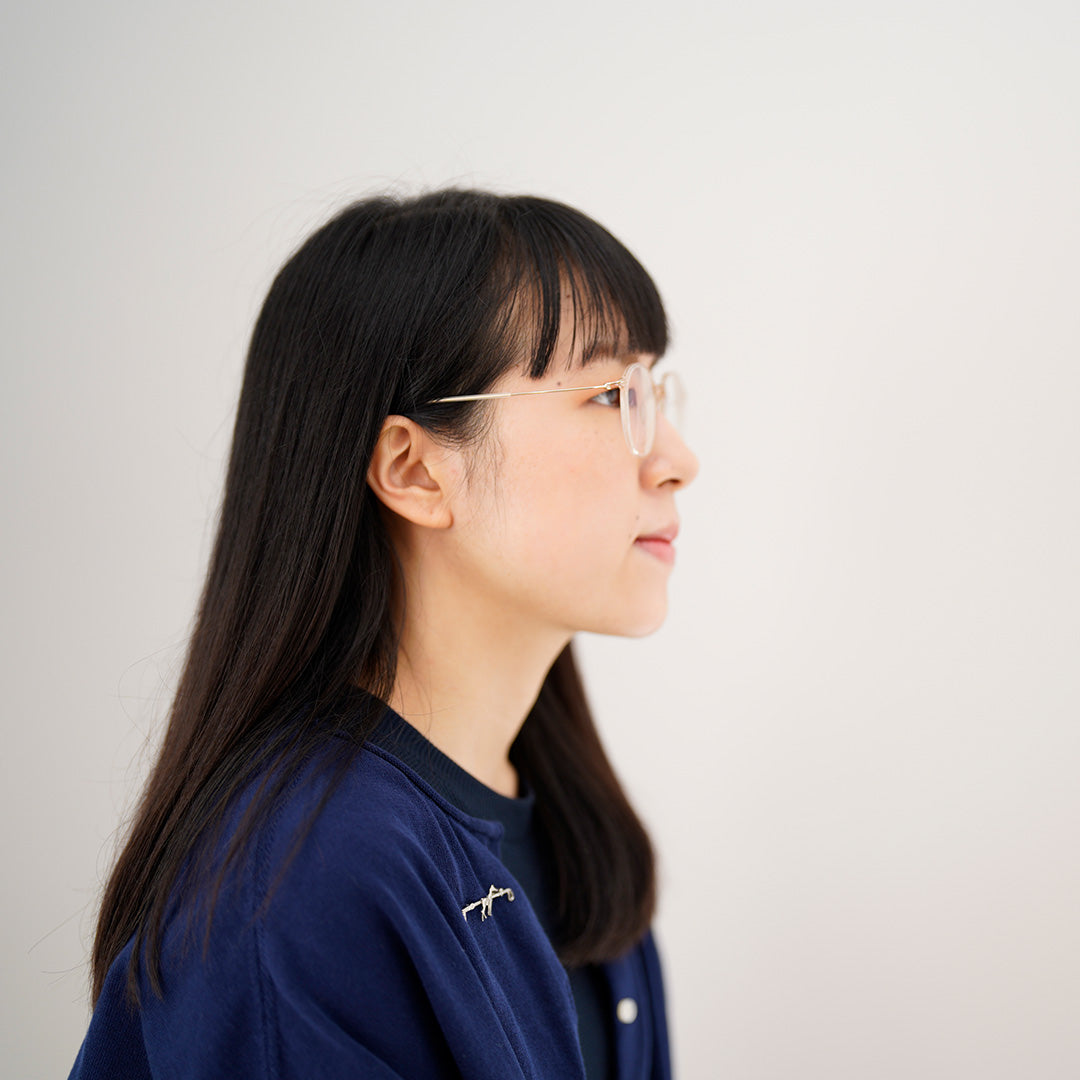
Noriko Doi
Kiko Doi
Doi Kiko / Born in Yamaguchi Prefecture in 1997. Spent her childhood in Virginia, USA. Graduated from Hiroshima City University, Faculty of Arts, Department of Fine Arts, majoring in oil painting. Completed graduate school at the same university. Currently enrolled in the Graduate School of Arts at Hiroshima City University. Awards received include being selected for the 1st FEI PURO ART AWARD (2022) and CAAK - Corporate Art Aid Kyoto (2023), among others.
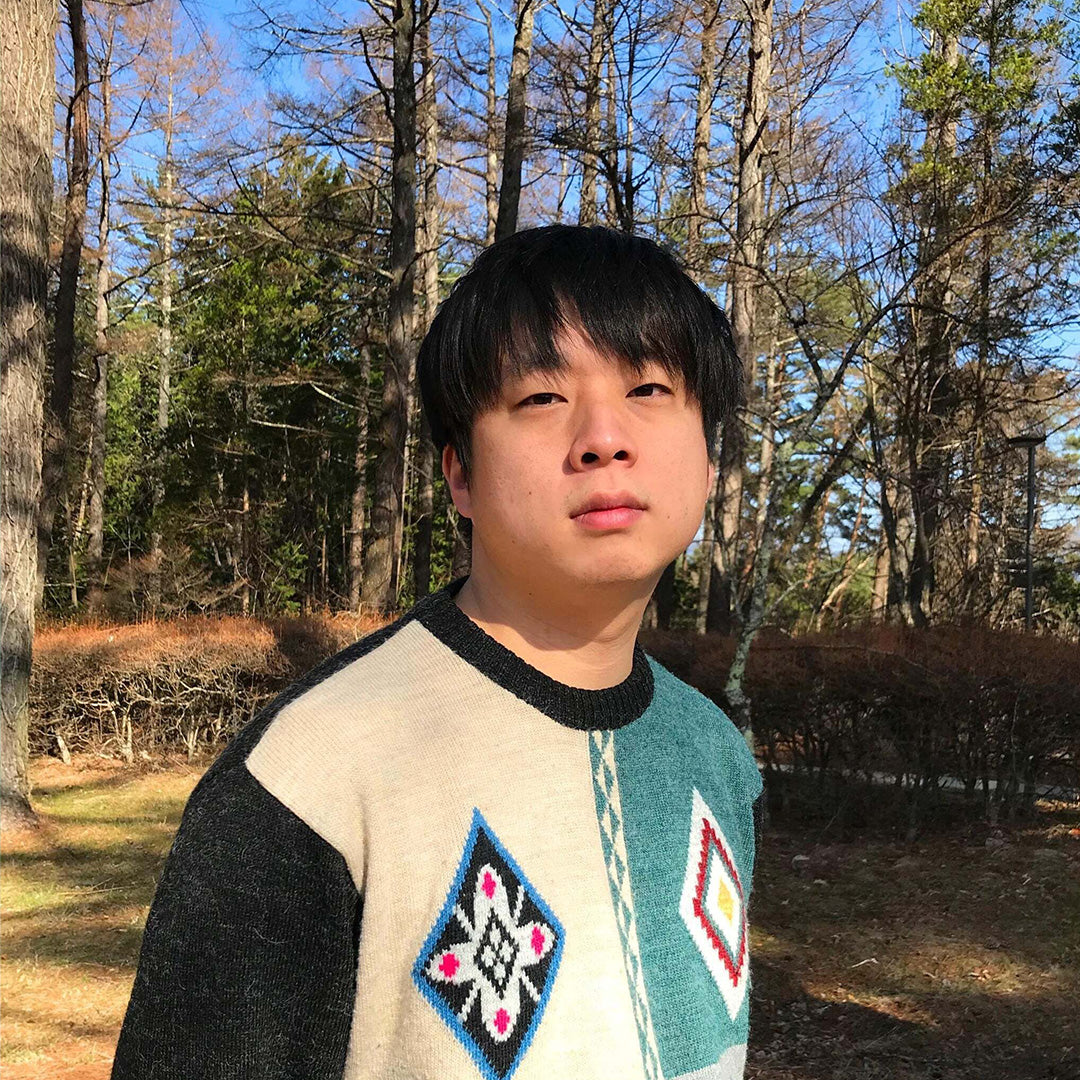
Shinya Yoshida
Shinya Yoshida
Yoshida Shinya / Born in Aomori Prefecture in 1994. Graduated from Akita Prefectural University of Art, Visual Arts Department. Completed the Graduate School of Tokyo University of the Arts, Film and New Media Department. Awards include the Tokyo University of the Arts Museum Purchase Award (Toward Springtime, 2021). Currently based in Hiroshima Prefecture.
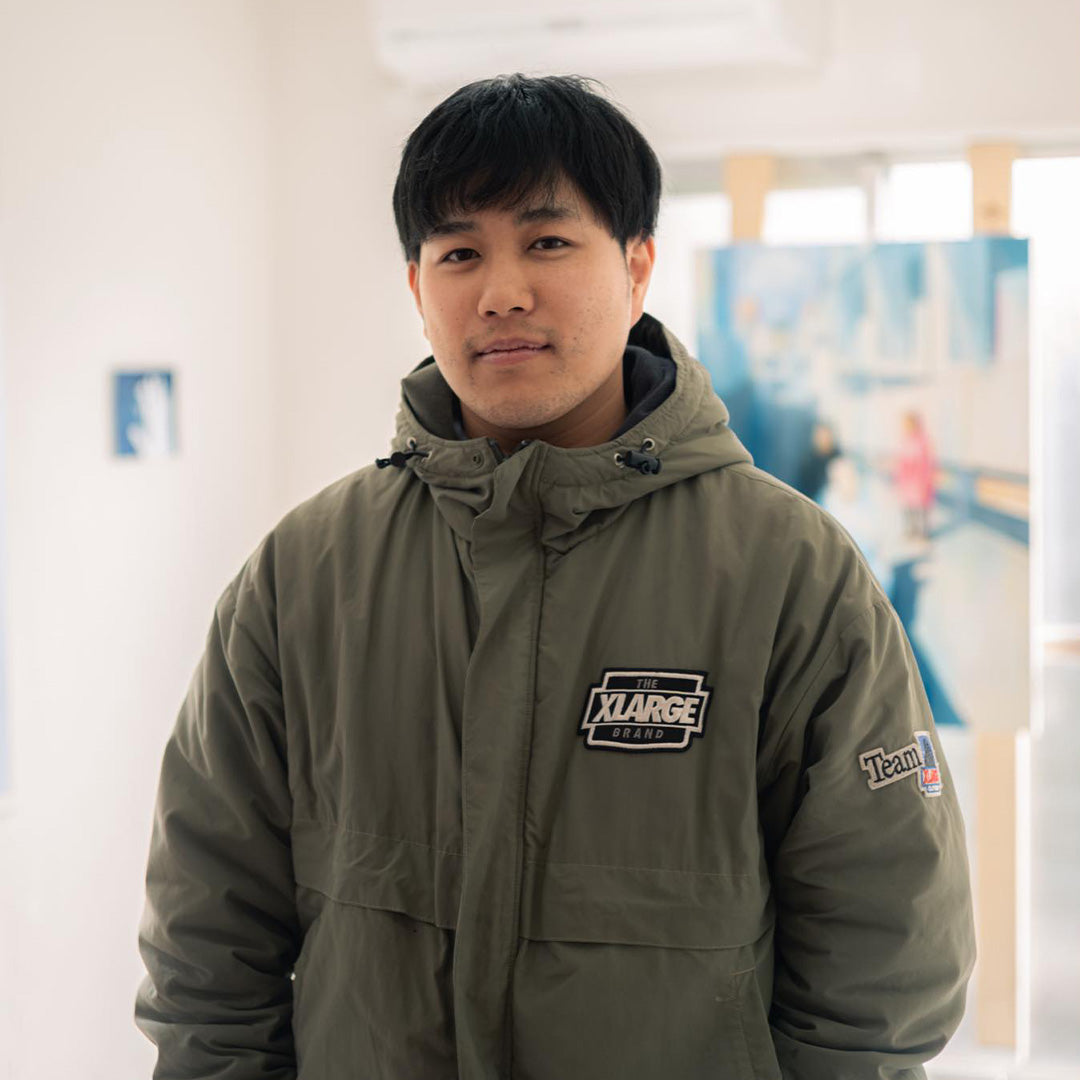
Tatsunori Yamaguchi
Tatsunori Yamaguchi
Yamaguchi Tatsunori / Born in Hiroshima in 1996. Graduated from the Department of Fine Arts, Faculty of Arts, Hiroshima City University, majoring in oil painting. Completed graduate school at the same university. Collaborative researcher at Hiroshima City University. Based in Chiba Prefecture from 2022.

